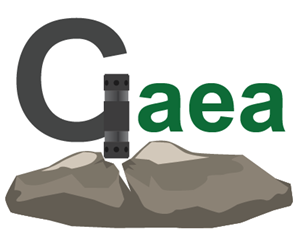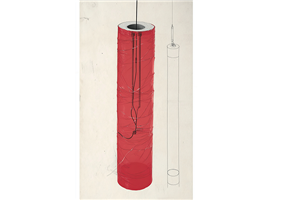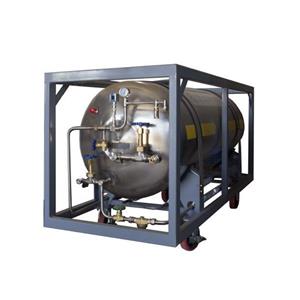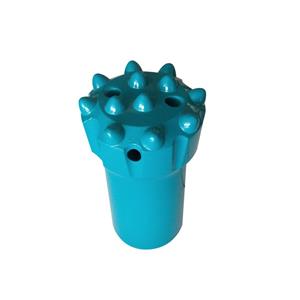How to operate the down-the-hole hammer?
How to operate the down-the-hole hammer? What are the methods of operating the hammer? Gaea rock Drilling Tool introduces the correct operation method and precautions of the drilling tool during use.

The hammer we call is also known as a pneumatic hammer or a pneumatic down-the-hole hammer. A power tool at the bottom of a hole that uses compressed air as the power medium and uses the energy of the compressed air to generate continuous impact loads. Compressed air can also be used as a pore washing medium at the same time. So how to operate the hammer correctly, do you all know about this? Friends who don't know can read the following article.
1. Ensure sufficient working pressure
When the hammer barely works under the condition of lower than the specified working pressure, its impact power and frequency will be reduced, so it cannot effectively break the rock and forcefully discharge the slag cut out of the hole in time, so that the rock drilling speed is sharp. Decrease, drill bit wear intensifies, and the cost of drilling is greatly increased. Therefore, it must not be reluctant to work under the specified working pressure.
2, choose a reasonable speed
When choosing the speed of the drilling tool, it should be decided according to different rock types. For rocks with good chiselability, it is hoped that the distance between two adjacent chisel marks should be larger, that is, the speed should be higher; on the contrary, in the case of poor rock chiselability, the speed should be lower.
3, maintain a certain axial pressure
The axial pressure applied to the hammer should be such that no rebound phenomenon occurs when the hammer is working. When the shaft pressure is too large, it will increase the load of the slewing mechanism when working on the rock with poor chiselability, causing accidents that damage the slewing mechanism and the drill pipe, and at the same time accelerate the wear of the drill; When working on the rock, it will cause drill clamping accidents due to drilling too fast.
4. Ensure reliable lubrication
After drilling a well, the hammer should be disassembled and cleaned, and a certain amount of hydraulic oil or mechanical oil should be added after assembly. The lubricating oil of the hammer uses No. 20 machine oil in summer, and No. 5-10 machine oil or No. 5 spindle oil in winter.
5. Ensure that the gas path is clean and unobstructed
Before the hammer is installed on the drill rig, the rear joint hole should be temporarily blocked to prevent foreign matter from falling into it; the drill pipe should be blown statically before the hammer is connected.
6. Drilling tools must not be reversed
The drill pipe and the hammer are both threaded connections, and reversal will cause a hole drop accident. Therefore, it is strictly forbidden to reverse the drilling tool during work. When disassembling the drill pipe, the inner part of the hole is not allowed to reverse.
7. Do not stop the gas supply first when you stop drilling
When drilling to a predetermined well depth and stopping drilling, do not immediately stop the gas supply to the hammer, so as to prevent the slag that has not been discharged from the hole falling to the bottom of the hole and burying the drill tool and causing a drill pinch accident due to the sudden stop of gas. Instead, lift the hammer slightly from the bottom of the well to stop the impact and forcefully purge and discharge the slag. Stop the gas when there is no slag and rock dust discharged from the orifice, and then lower the drilling tool to stop the rotation.
8. Appropriate control of water supply
When performing wet rock drilling operations, the water flowing into the hammer should be properly controlled. Generally, it is appropriate to control that neither dry rock dust nor mud is formed.
9. Pay attention to the diameter change when replacing the drill bit
After the drill bit is worn out, the new drill bit cannot be used when the hole is not drilled. Replace the old drill bit to avoid clamping the drill due to the diameter of the new drill bit being larger than the drilled hole.




